Topics
Topics
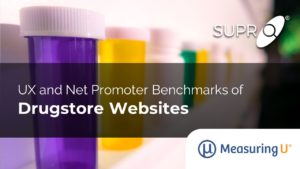
UX and Net Promoter Benchmarks of Drugstore Websites
Drugstores seem to be on every city corner. They are a blend of convenience store, retailer, and pharmacy. Drugstores are a type of mass merchant enterprise, but they fit in a smaller box than their big-box counterparts. According to Kentley Insights, the total 2020 drugstore revenue in the United States was $312.1 billion. Additionally, e-commerce
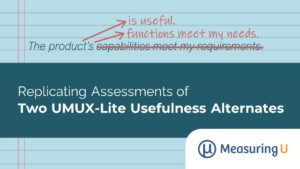
Replicating Assessments of Two UMUX-Lite Usefulness Alternates
The original wording of the UMUX-Lite Perceived Usefulness item is “{Product}’s capabilities meet my requirements.” Since we started using the UMUX-Lite in our practice, we’ve had numerous clients ask whether it would be possible to simplify the wording of this item to more closely match the simplicity of the UMUX-Lite Perceived Ease item, “{Product} is
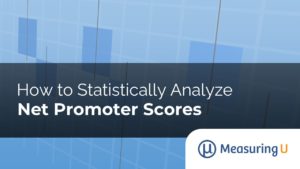
How to Statistically Analyze Net Promoter Scores
In a famous Harvard Business Review article published in 2003, Fred Reichheld introduced the Net Promoter Score (NPS). The NPS uses a single likelihood-to-recommend (LTR) question (“How likely is it that you would recommend our company to a friend or colleague?”) with 11 scale steps from 0 (Not at all likely) to 10 (Extremely likely).
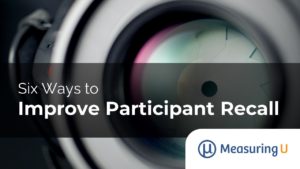
Six Ways to Improve Participant Recall
How much did you spend last month on clothing? What grocery stores have you visited in the last three months? How helpful are your Netflix recommendations? Surveys and other research methods (such as in-depth interviewing) often rely on participants recalling prior events or behaviors. For example, these could be about purchasing a product or service

UX and Net Promoter Benchmarks of Mass Merchant Websites
With the COVID-19 pandemic’s effect on consumer shopping behavior (e.g., increased online shopping for delivery or contactless pickup), mass merchant revenues rose dramatically in 2020 and the first part of 2021. For example, Target reported a $15B sales growth in 2020, higher than its total sales growth over the past 11 years. For another example,
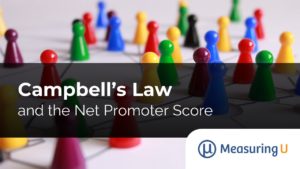
Campbell’s Law and the Net Promoter Score
To make better decisions, you need data. That’s become a truism. But can the process of using the data lead to bad outcomes? It seems like a hypothetical question, but it doesn’t take long to find a few key metrics that, when tracked, can lead to unwanted outcomes: On-time departures: On-time flight departures for airlines
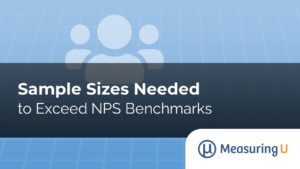
Sample Sizes Needed to Exceed NPS Benchmarks
So, you’re planning to collect data and you want to know whether your Net Promoter Score (NPS) is significantly above 50%. Established benchmarks can help research teams know if they’ve reached acceptable thresholds, such as a high Net Promoter Score (e.g., more than 50%). A high NPS is associated with successful product launches. But an NPS
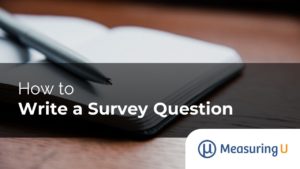
How to Write a Survey Question
A blank page can lead to writer’s block. Writing survey questions can also seem like trying to write the Great American Novel. It can be particularly daunting knowing that subtle word changes may lead to unanticipated responses. The good news is that you don’t have to start from scratch each time. Instead, you can follow
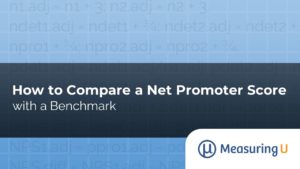
How to Compare a Net Promoter Score with a Benchmark
We recently described how to compare two Net Promoter Scores (NPS) statistically using a new method based on adjusted-Wald proportions. In addition to comparing two NPS, researchers sometimes need to compare one NPS with a benchmark. For example, suppose you have data that the average NPS in your industry is 17.5%, and you want to
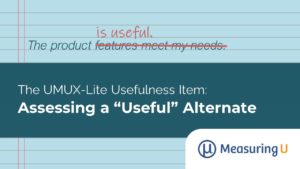
The UMUX-Lite Usefulness Item: Assessing a “Useful” Alternate
When Kraig Finstad (2010) developed the Usability Metric for User Experience (UMUX), his goal was to replace the ten-item System Usability Scale (SUS, a popular measure of perceived usability) with a shorter questionnaire that would (1) correlate highly with the SUS and (2) have item content related to the ISO 9241 Part 11 international standard,
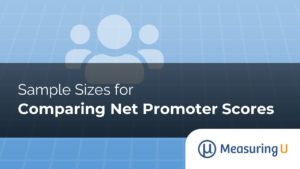
Sample Sizes for Comparing Net Promoter Scores
Sample size estimation is a critical step in research planning, including when you’re trying to detect differences in measures like Net Promoter Scores. Too small of a sample and you risk not being able to differentiate real differences from sampling error. Too large of a sample and you risk wasting resources—researchers’ and respondents’ time and,

From Statistical to Practical Significance
Hypothesis testing is one of the most common frameworks for making decisions with data in both scientific and industrial contexts. But this statistical framework, formally called Null Hypothesis Statistics Testing (NHST), can be confusing (and controversial). In an earlier article, we showed how to use the core framework of statistical hypothesis testing: you start with